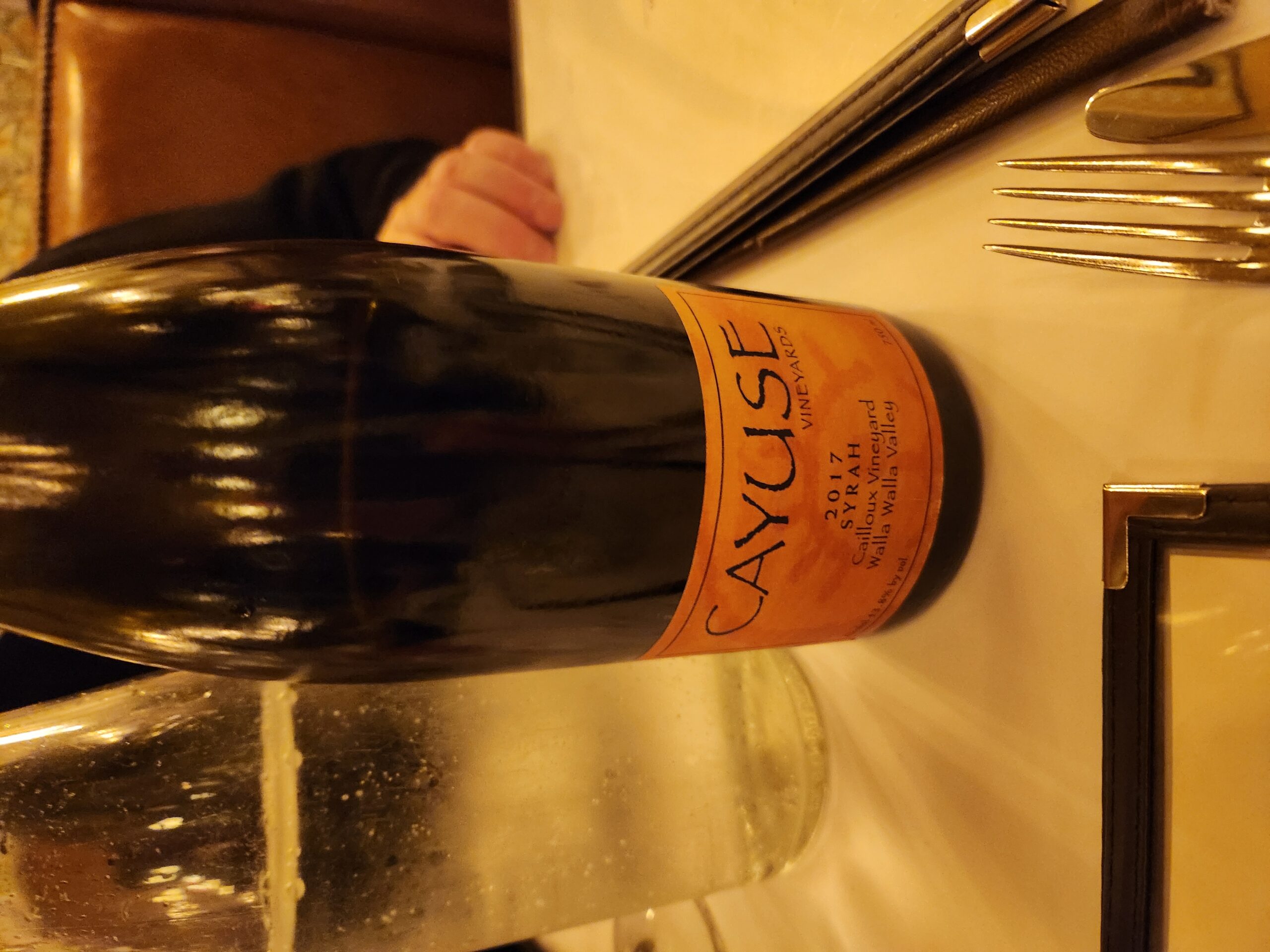Cayuse 2017 Syrah Cailloux Vineyard Walla Walla Washington State 92

I recently had the opportunity to taste a bottle of a famous American Syrah: The 2017 Cayuse Syrah Cailloux Vineyard in Walla Walla in Washington State. The story of Cayuse, the wine child of Christophe Baron (a French wine maker whose family owns vineyards in western Champagne) is itself as interesting as the wines: In 1993, a young French vigneron visited the then all-but-unknown town of Walla Walla, and became fascinated with what was seemingly useless, stone-covered farmland. This stony terroir reminded Barron of the cobblestones of the southern Rhone valley, and Châteauneuf-du-Pape in particular, of his native France. To quote him: “I almost fell on my derrière when I saw those stones,” he says. “And I’ve been living the dream ever since.” Baron named his venture Cayuse Vineyards, after a Native American tribe whose name was derived from the French word “cailloux”—which means “stones.” Cayuse comprises about twenty hectares divided among five vineyards; they have planted, in addition to Syrah, also Grenache, Viognier, Tempranillo, Cabernet Sauvignon, Cabernet Franc and even Merlot. Ever the serious joker, Baron has given such fanciful names to his wines, including The Bionic Frog, God only knows (Grenache) and Flying Pig. The Cayuse mailing list is long over-subscribed. Many of the wines reach the secondary market making them available to the serious wine buying public.
Now onto the wine in question. The color already showed some signs of aging. On the nose there was a welcoming sweetness and warmth, the sense that the sun reflected back from all those stones but just a hint of the pepper and spice one associates with the best northern Rhones. The wine at the olfactory level reminded more of a St. Joseph than a Côte-Rôtie. Being frank, it is my belief that the Côte-Rôtie is the appellation in the Rhone where Syrah reaches the apogee of spice, intensity and expressivity. Typically, a single-site Côte-Rôtie needs a decade of bottle aging to begin to shed its tannin mantle—similarity to cru Barolos. On the palate the Cayuse was smooth, round, mouth filling and altogether pleasing. It seems quite fully developed at five years in the bottle. Upon repeated tastings, the acid test of a wine’s complexity and tension, the wine did not become more interesting. My friend John who brought the bottle form his excellent cellar agreed. Where was the tannin, the bite, the resistance that the best northern Rhône wines usually exhibit? If I may be permitted, I’d like to say this: it is not stones alone and careful vineyard work that enables Syrah to get to its peak of individuality and terroir specificity. This wine is certainly enjoyable, as my score shows, but should offer more; as it is I would suggest drinking this over the next four years, until 2028.

 中文
中文



